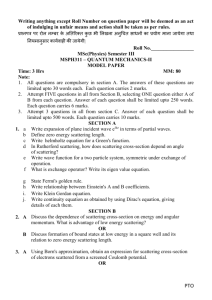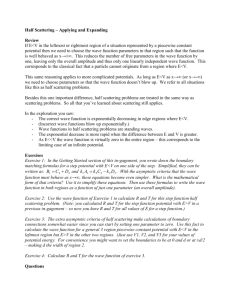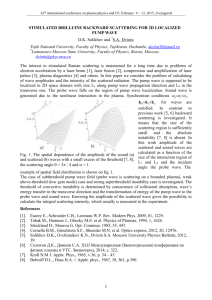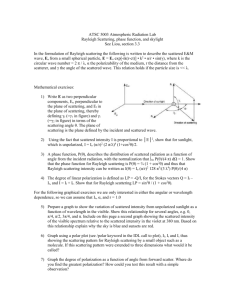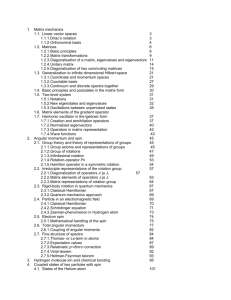Presentation - Oklahoma State University
advertisement
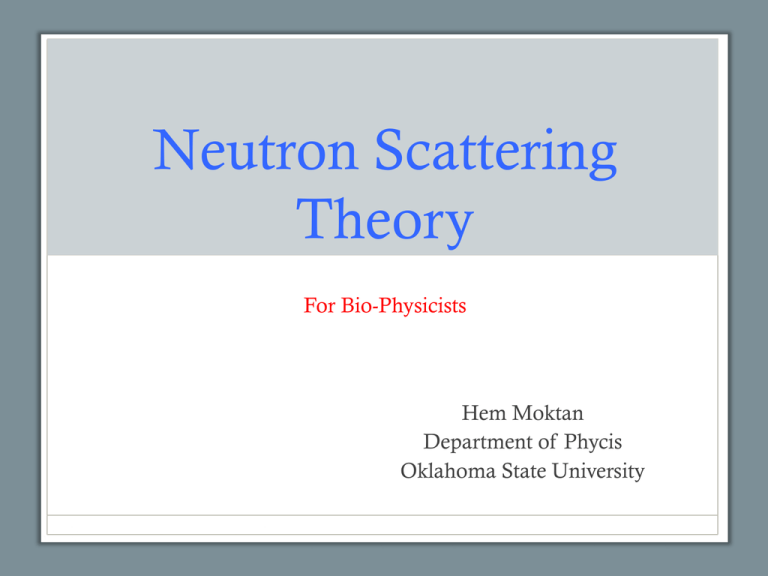
Neutron Scattering Theory For Bio-Physicists Hem Moktan Department of Phycis Oklahoma State University Particle-wave duality • de-Broglie wavelength: • Wave number: • Momentum: • Momentum operator: • Kinetic energy: Schrodinger wave equation • Time-independent Schrodinger wave equation: Hψ = Eψ Where, H is Hamiltonian operator. H = K.E. + P.E. = T + V With Particle in a 1-d box Quantum approach • Potential: • Solution inside the box: • Boundary conditions: ψ(x=0)=ψ(x=L)=0; • Normalized wave function: • Allowed (Quantized) Energies: • Wave-functions: Particle waves • Infinite plane wave: ψ=exp(ikz) = cos kz + i sinkz • Spherical wave:ψ = • Scattered wave: Neutron-Scattering Model for neutron scattering Scattering Amplitude • Wave equation: • Solution is: • Green’s function satisfies the point source equation: • Solution: The total scattered wave function is an integral equation which can be solved by means of a series of iterative approximations, known as Born Series. - Zero-order Solution: - First order solution: And so on… In real scattering experiment • Where r is the distance from the target to the detector and r’ is the size of the target. • So we approximate: • Asymptotic limit of the wave function: The first Born Approximation So, the scattering amplitude becomes And the differential cross section: Example: Bragg Diffraction If the potential is spherically symmetric: So, solving the Schrodinger equation in first-order Born approximation, the differential cross-section is given by above equation for a spherically symmetric potential. The potential is weak enough that the scattered wave is only slightly different from incident plane wave. For s-wave scattering scattering amplitude = -b scattering length Question: Use Born approximation for Coulomb potential and derive the classical Rutherford scattering formula. Scattering Cross Section Thank you!! • Reading Materials: • Lectures 1 and 2. • Quantum Mechanics(Text) -Eugen Merzbacher For SANS: http://www.ncnr.nist.gov/staff/hammouda/the_SANS_toolbo x.pdf




